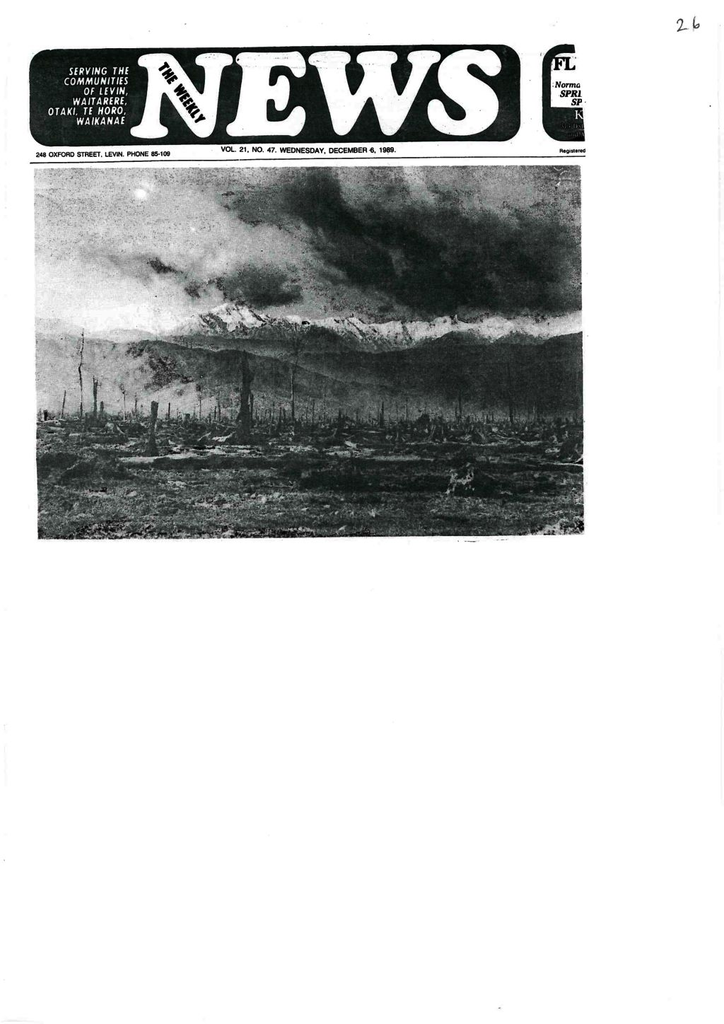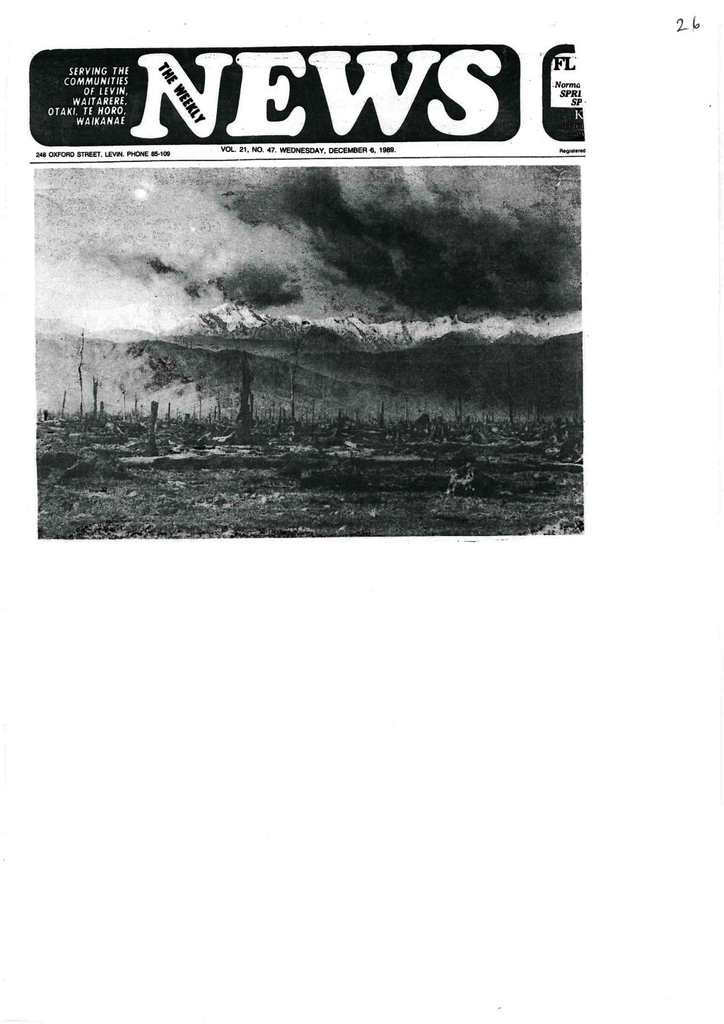Disbelief greeted rail halt
- Description
This text that follows is the content of the attached PDF.
The railway was seen as a means of reviving a flagging local economy, as business was stagnant, unemployment high and common commodities from Nelson were expensive.
Progressive spirits such as John Plimmer and James Wallace repeatedly asked the Government to continue the line but were told it was not economically viable.
Public agitation for the railway grew and on September 16, 1880 seventy people gathered in the Odd Fellows’ Hall in Johnsonville to discuss the subject.
Two weeks later, in Wellington, a further meeting was called. Thirty gentlemen of high repute attended. Local leading businessmen, merchants, politicians and lawyers, men such as Travers, Wallace, Plimmer, Levin and Shannon.
It was at this meeting that a committee was formed to investigate whether a private company could build the railway.
It was decided to form a company and approach the Government for a charter to build the line. The Charter was approved. The North Island West Coast Railway Company was formed in 1881. The chairman was Mr L.G. Nathan. The committee of the company were Messrs. W.T.L. Travers, William Levin, Johnson, James Wallace, Moorhouse, George Shannon, Brandon, George, Hutchison, Woodward, A. Young, John Plimmer, Glen P. Buckley and Dr Grace. Some of these names survive as names of stations and towns of Levin, Shannon and Plimmerton.
Capital of £500,000 ($1,000,000) had to be raised in shares of £5 ($10) though full value was only called on over several years. The money was raised almost entirely in New Zealand, mainly in the area of the proposed line. A feature was that there were many small investors indicating that the public wanted the line built. It was printed that some Maoris invested with the money they received from the sale of their land. Later another £500,000 ($1,000,000) in capital was raised. The name was later changed to the Wellington and Manawatu Railway Company and the route was decided to be from Thorndon, Wellington to Longburn, not through Foxton as the Government had planned formerly.
A large area of land contiguous to the line was granted to the company as it was bought from the natives. The Charter provided that land at Thorndon would be reclaimed from the harbour by the company for station and yards. All the construction done to Johnsonville, materials and workshops went to the company.
Encouragement was received by the Government. Premier Hall promised that if a company was formed, to construct the railway, the Government would give it a grant of land and the right to reclaim 30 acres for a terminal in Wellington. Hall also agreed to make the company a present of a new iron bridge, imported from Britain, to span the narrow neck which divides Porirua harbour.
In addition, the Government introduced a bill into Parliament enabling the company to commence operations immediately on its formation.
In 1881 the Manawatu-Wellington Railway Company was registered with a capital of £500,000 raised by the issuing of a stock tender throughout the country and overseas.
In early 1882 the Railways Construction and Land Bill was passed. Later, the tenth of March, that year a contract was signed between the Government and the newly formed company. The contract stipulated, amongst other things, that firstly the company was to spend £50,000 within a year, secondly, that the line must be opened for traffic by September 25, 1887, thirdly, the Government was to exercise close control and supervision of all stages of construction, and finally, also most importantly to the company, the Government would endow Crown land to the value of £126,375, estimated to be 35% of the cost of the line, to the company.
Chief engineer Higginson was in charge of construction. He had experience in Russia, India and Mauritius. Higginson was given a free hand in choosing the route, with two provisos. Firstly, it must allow for easy construction and secondly, it must open up as much of the land endowment as possible.
 One of Higginson’s first actions was to choose to extend the line to Longburn (shown in photo on the left) and to link up with the Government line to Palmerston North and northwards. However, the major reason behind extending the line to Longburn was that the Government endowment of £126,375 worth of land could be fulfilled, whereas if they stopped at Foxton only £96,580 in Crown land could be gained, a shortfall of £29,805; easily made up if the line went to Longburn.
One of Higginson’s first actions was to choose to extend the line to Longburn (shown in photo on the left) and to link up with the Government line to Palmerston North and northwards. However, the major reason behind extending the line to Longburn was that the Government endowment of £126,375 worth of land could be fulfilled, whereas if they stopped at Foxton only £96,580 in Crown land could be gained, a shortfall of £29,805; easily made up if the line went to Longburn.
Identification
- Date
- December 6, 1989
Taxonomy
- Community Tags


